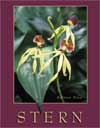1. Biomes are biotic communities considered on a global or at least
a continental scale. Major biomes of North America include tundra, taiga, temperate
deciduous forests, grasslands, deserts, mountain forests, and tropical rain
forests. 2. Tundra is found primarily above the Arctic Circle. It includes few
trees and many lichens and grasses and is characterized by the presence of permafrost
below the surface. Alpine tundra occurs above timberline in mountains below
the Arctic Circle. 3. Taiga is dominated by coniferous trees, with birch, aspen, and willow
in the wetter areas. Many perennials and few annuals occur in taiga. 4. Temperate deciduous forests are dominated by trees such as sugar
maple, American basswood, beech, oak, and hickory, with evergreens such as hemlock
and eastern white pine toward the northern and southeastern borders. 5. Grasslands are found toward the interiors of continental masses.
Those located in Mediterranean climatic zones usually include vernal pools with
unique annual floras. Many grasslands have been converted to agricultural use. 6. Deserts are characterized by low annual precipitation and wide daily
temperature ranges, with plants adapted both in form and metabolism to the environment. 7. Mountain and coastal forests occupy much of the Pacific Northwest
and extend south along the Rocky Mountains and California mountain ranges. The
primarily coniferous tree species tend to be in zones determined by altitude.
The forests have mostly dry summers, and some of the species associated with
it have thick bark that protects the trees from fires that occur frequently
in this type of climate. Other species (e.g., knobcone pine) depend on fires
for normal distribution and germination of seeds. 8. The tropical rain forests constitute nearly half of all forest land
and contain more species of plants and animals than all the other biomes combined.
Numerous woody plants and vines form multilayered canopies that permit very
little light to reach the floor. The soils are poor, with nutrients released
during decomposition being rapidly recycled. The biome is being destroyed so
rapidly that it will disappear within 20 years if the destruction is not halted. | 


 2003 McGraw-Hill Higher Education
2003 McGraw-Hill Higher Education

 2003 McGraw-Hill Higher Education
2003 McGraw-Hill Higher Education